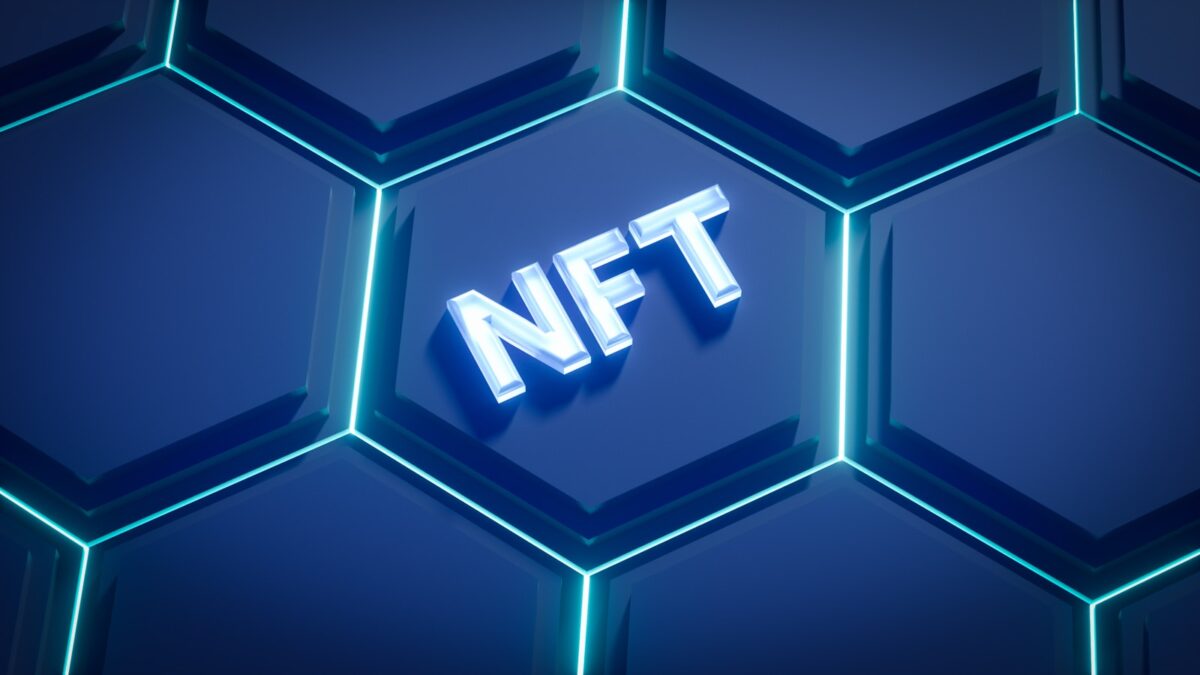
Gas fees in Ethereum

Reducing transaction expenses requires mastering the relationship between network congestion and computational demand. Each operation within decentralized applications demands a certain amount of computational power, which directly influences the execution expense. By analyzing how smart contracts allocate resources during their runtime, developers can identify inefficiencies and apply optimization techniques to minimize overhead.
The dynamic pricing model responds sensitively to network activity levels, with peak congestion causing significant spikes in transaction premiums. Monitoring mempool status and adjusting submission timing can lead to considerable cost savings. Additionally, batching operations or simplifying contract logic reduces required computation, further lowering necessary expenditure.
Innovations such as layer-2 solutions and alternative consensus mechanisms introduce new avenues for expense reduction without sacrificing security. These approaches shift portions of execution off-chain or alter validation rules to decrease load on the primary ledger. Experimental deployments demonstrate that leveraging these strategies can maintain throughput while easing financial burdens for users interacting with decentralized protocols.
Gas fees in Ethereum
Transaction costs in the Ethereum network directly correlate with the computational resources required for execution. Every interaction with decentralized applications or smart contracts demands a certain amount of work from nodes, which translates into a measurable expenditure called gas. Understanding this mechanism is critical for optimizing contract deployment and execution, especially during periods of heightened network activity.
Network congestion significantly influences these transactional expenses by increasing competition for block space. As more users submit operations simultaneously, miners prioritize those offering higher incentives, causing fees to fluctuate dramatically. This dynamic environment necessitates careful planning and real-time adjustment strategies to minimize expenditure without compromising performance.
Technical foundation and optimization strategies
The core principle behind cost measurement lies in quantifying computation steps performed by the Ethereum Virtual Machine (EVM). Each opcode executed consumes a specific gas amount proportional to its complexity and resource demand. For example, simple arithmetic operations require less computation than storage access or cryptographic functions embedded in smart contracts.
Optimization techniques focus on reducing unnecessary instructions within contract code and leveraging efficient data structures. Developers often employ tools to analyze execution traces and identify bottlenecks that inflate consumption. Techniques such as batching multiple calls or using layer 2 scaling solutions can also alleviate pressure on the primary chain, thus lowering transactional expenditures under heavy workloads.
A comparative study of transaction costs during peak congestion periods reveals that carefully optimized contracts experience up to 40% lower computational charges than unrefined counterparts. Moreover, adopting strategies like calldata compression or off-chain computations before finalizing on-chain state changes can further reduce cumulative costs.
Table: Gas Consumption Examples for Common Operations
The above data underscores how different types of operations impact total computation cost variably. Practitioners aiming to design economical decentralized applications should prioritize minimizing costly storage writes while maximizing reuse of cheaper memory operations. Such an approach balances functional completeness with efficiency under fluctuating network conditions.
How Gas Fees Are Calculated
Transaction costs on the Ethereum network arise from the computational resources required for executing operations within smart contracts and transferring data across nodes. These expenses are quantified through a measurement unit that reflects the amount of computation and storage each instruction consumes. The calculation hinges on multiplying this unit by a dynamic price set by network demand, ensuring that resource usage corresponds to appropriate compensation.
The total cost depends fundamentally on the complexity of the transaction’s execution. Simple transfers between accounts require fewer computational steps and thus incur minimal charges, while invoking complex decentralized applications involves extensive code execution, increasing resource consumption significantly. Understanding how these expenses scale with operation types reveals pathways for optimization and cost reduction.
Detailed Mechanisms Behind Transaction Pricing
The core metric for quantifying resource usage is known as “gas,” representing discrete units of computation or storage consumed during transaction processing. Every opcode in the Ethereum Virtual Machine (EVM) is assigned a specific gas cost reflecting its computational intensity. For example, a basic arithmetic operation may cost 3 units, whereas writing data to blockchain storage can consume thousands of units due to permanence and replication.
Network congestion plays a pivotal role in determining the per-unit price. When demand exceeds capacity, users competitively increase their bids for resource allocation, driving up prices. This bidding mechanism ensures that miners prioritize transactions based on willingness to pay per unit consumed, enabling efficient allocation under variable load conditions.
- Base Cost: Each transaction carries an intrinsic gas cost covering fixed overheads like signature verification and basic data validation.
- Execution Cost: Additional charges accrue as the EVM processes contract code instructions, with more complex logic demanding higher consumption.
- Storage Cost: Writing or modifying persistent data entails long-term upkeep fees embedded into the calculation.
The final payable amount emerges from multiplying total gas used by the chosen price per unit at submission time. Users may specify maximum thresholds to control expenditure but risk transaction delay if bids fall below current market rates. This interactive pricing model fosters experimentation with fee strategies aligned to urgency and budget constraints.
This granular breakdown invites developers to focus on optimizing smart contracts by reducing unnecessary operations or improving algorithmic efficiency. Techniques such as minimizing state writes or employing off-chain computations can substantially lower consumed resources.
The introduction of protocol upgrades has also refined expense calculations by introducing mechanisms like base fee adjustments tied directly to block congestion levels. These innovations create a feedback loop where price volatility aligns more closely with real-time network activity patterns, promoting fairness and predictability in costs associated with executing distributed programs.
Ways to Reduce Gas Costs
Minimizing transaction expenses begins with optimizing the computation required for executing smart contracts. Complex contract logic increases the amount of computational steps, directly impacting the cost of execution on the blockchain. Developers can reduce these expenses by simplifying contract functions, avoiding redundant calculations, and leveraging efficient data structures such as mappings instead of arrays for state variables. For example, batching multiple operations into a single transaction reduces cumulative overhead compared to separate calls.
Another effective approach involves selecting less congested times for submitting transactions to the network. Network congestion significantly inflates operational costs due to competition among users bidding higher prices for faster inclusion in blocks. Monitoring mempool activity and utilizing gas price prediction tools allows senders to time their submissions when the network demand is lower, thus lowering transactional expenses without sacrificing execution speed.
Advanced Techniques and Layer Solutions
Implementing Layer 2 scaling solutions presents a promising method for cost reduction by offloading computation and storage from the main chain. Rollups, sidechains, and state channels enable aggregation of multiple transactions or computations off-chain before committing final states back on-chain. These mechanisms decrease load on the primary ledger, reducing both congestion and associated payments. Case studies demonstrate that rollup usage can cut operational charges by up to 90%, depending on throughput and network conditions.
Contract developers also benefit from adopting upgradeable or modular architectures that allow selective updating of contract components without redeploying entire systems. This practice diminishes repetitive deployment costs tied to full contract initialization. Additionally, employing native opcode optimizations introduced in recent protocol upgrades can substantially lower execution costs by streamlining low-level instructions during transaction processing.
Impact of Network Congestion
Network congestion directly influences the computational cost required for transaction execution within decentralized platforms. Increased demand for processing smart contract operations leads to a surge in resource consumption, elevating transactional expenses. This phenomenon results from limited block space and fixed throughput, causing delays and higher operational costs during peak activity periods.
Optimization techniques at both protocol and application layers play a pivotal role in mitigating congestion effects. Layer-2 scaling solutions and transaction batching have demonstrated measurable reductions in execution overhead, thus lowering user expenditure. Empirical studies reveal that strategic scheduling and gas price adjustments can alleviate bottlenecks without compromising security or decentralization.
Technical Dynamics of Congestion on Execution Costs
The interplay between network load and computation intensity of contracts significantly affects transactional pricing models. Complex contracts requiring extensive opcode executions increase resource allocation per transaction, intensifying competition for block inclusion. Data from recent congestion spikes indicate that transactions invoking multi-step smart contract functions experience up to 4x higher cost multipliers compared to simple value transfers.
Gas optimization strategies embedded within contract design have shown efficacy in reducing consumption during congested intervals. For instance, minimizing state variable writes and employing efficient looping constructs decrease intrinsic operational requirements. Case studies from high-traffic DeFi protocols illustrate how such optimizations contribute to maintaining manageable execution costs even amidst network strain.
- Transaction Prioritization: Miners prioritize transactions offering higher compensation per computational unit, creating a dynamic pricing environment influenced by congestion levels.
- Fee Market Behavior: Congestion induces competitive fee bidding, which can price out smaller participants or delay non-urgent operations until relief occurs.
- Contract Complexity: Advanced decentralized applications with intricate logic exacerbate congestion impact due to their heavier computational footprint.
The continuous feedback loop between network saturation and operational expense encourages innovation in smart contract execution models. Emerging paradigms like layer-1 protocol upgrades aim to enhance throughput capacity, while parallel developments focus on off-chain computation to reduce mainnet load. Experimental implementations demonstrate potential for significant cost stabilization under varying network conditions.
An investigative approach into congestion patterns reveals opportunities for adaptive transaction submission strategies. Users leveraging real-time network metrics can optimize timing and compensation offers, balancing immediacy against cost efficiency. Such methods encourage practical experimentation with dynamic fee adjustments based on live computational demand feedback.
The relationship between network saturation and transactional economics invites further exploration into predictive modeling frameworks. By analyzing historical congestion data alongside smart contract interaction complexity, researchers can refine algorithms that forecast optimal execution windows. This scientific inquiry fosters deeper understanding of decentralized computation ecosystems and their evolving economic mechanics.
Tools for Monitoring Transaction Costs in Blockchain Networks
Accurate tracking of transaction expenditure is fundamental for optimizing the execution of smart contracts and managing computational resources on decentralized platforms. Real-time dashboards such as ETH Gas Station offer granular insights into current network congestion, presenting recommended price tiers based on pending transaction volumes. These platforms analyze mempool data to estimate how much resource allocation is required for timely confirmation, enabling users to adjust their bids dynamically rather than relying on static parameters.
Advanced monitoring utilities like Blocknative’s Gas Estimator integrate predictive algorithms that consider historic block times and pending transaction backlogs. By applying machine learning techniques, these tools forecast short-term fluctuations in demand for computation and execution slots within the blockchain, providing users with strategic recommendations to minimize costs without sacrificing transaction speed. Such optimization is particularly critical when deploying complex smart contracts that require significant gas consumption.
Exploring Key Instruments for Network Congestion Analysis
GasNow, a popular resource developed by a leading blockchain explorer, offers minute-by-minute updates on network load and resource pricing tiers. It categorizes fees into levels–rapid, standard, and slow–each corresponding to different confirmation timeframes. This differentiation allows developers and traders to tailor their spending according to urgency and project demands, improving cost-efficiency during periods of heightened activity.
Etherscan’s Gas Tracker provides comprehensive historical data tables juxtaposed with live metrics, facilitating comparative studies of fee trends over various epochs. Through its API access, analysts can incorporate this data into custom scripts or automated trading bots that optimize transaction submission timing relative to expected network states. The ability to programmatically interact with such datasets empowers researchers and technologists to conduct empirical investigations into fee dynamics under varying congestion scenarios.
Another notable approach involves integrating multiple sources via aggregators like Dune Analytics, which supports user-generated queries combining blockchain event logs with external market indicators. This enables hypothesis-driven exploration into how external factors influence computational resource demand on-chain. For instance, correlating decentralized finance protocol activity spikes with gas cost surges reveals intricate interdependencies that inform better contract design and execution scheduling strategies.
Conclusion: Network Congestion and Execution Optimization in Transaction Throughput
Prioritizing transaction execution strategies that reduce network congestion directly enhances processing speed while minimizing computational overhead. Layered solutions focusing on smart contract efficiency and gas consumption optimization demonstrate measurable improvements, especially under peak load conditions where block space becomes scarce.
The interplay between transaction complexity and throughput highlights the necessity of refining virtual machine operations to streamline instruction sets within smart contracts. For example, adopting calldata compression or modular execution paths can significantly cut resource demands, thereby accelerating confirmation times without compromising security or decentralization.
- Dynamic fee adjustment mechanisms: Algorithms that predict congestion patterns enable adaptive pricing models, incentivizing optimal network utilization.
- Execution parallelism: Emerging sharding techniques promise to distribute computation across multiple segments, reducing bottlenecks inherent in serialized processing.
- Smart contract design principles: Encouraging minimalistic code paths reduces unnecessary state changes, lowering intrinsic costs and expediting finality.
The trajectory of evolving protocol upgrades aims to harmonize throughput with cost-efficiency by integrating advanced consensus techniques and off-chain computations. Investigating how zero-knowledge proofs can validate complex transactions without exhaustive on-chain execution opens promising avenues for scalability. Future research should experimentally compare these methods’ impacts on end-to-end latency under varying congestion scenarios. How might optimized virtual machines further transform transaction economics? What balance between decentralization and speed is achievable through hybrid approaches?
This analytical framework encourages practitioners to iterate on smart contract deployment with a focus on lean computation patterns while monitoring real-time network metrics. Such experimental rigor will enhance understanding of systemic behavior under stress, guiding refinements that progressively narrow gaps between throughput capacity and user demand.


